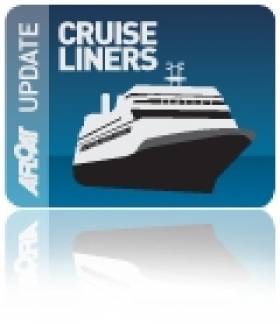Displaying items by tag: MS Fram
Fram From the Fjords and Beyond
Fram operates on cruises from Norway to Spitsbergen, Greenland, and Europe. She also cruises in Antarctic waters and explores the Chilean fjords. She can handle 400 passengers in 254 berths. On board there is a reception area, a large top-deck glass-enclosed observation salon positioned forward, bar, restaurant, library, shop and leisure facilities, including gym, sauna and jacuzzi. For further information and deck plans click HERE.
Throughout her interior she has traditional and modern artwork from a selection of Norwegian and Greenlandic artists. To read more on her Antarctic cruises and other destinations click HERE.
On this particular cruise, she had departed from Bergin and called to several Scottish ports prior to berthing in Belfast and docking in Dublin yesterday. This evening she heads for the Isles of Scilly, followed by a call to Portsmouth before disembarking her passengers in Hamburg.





























































